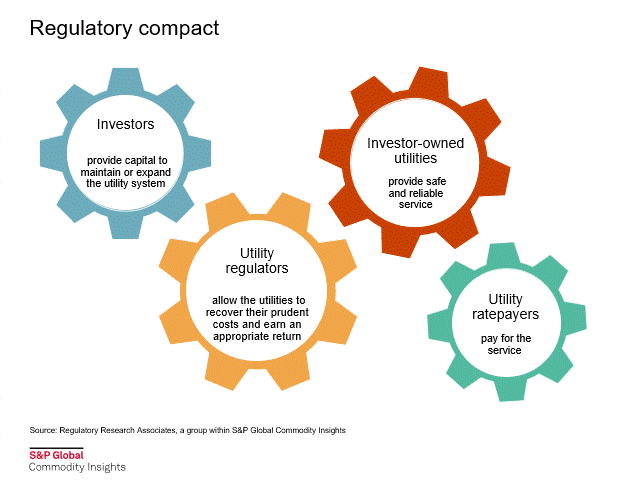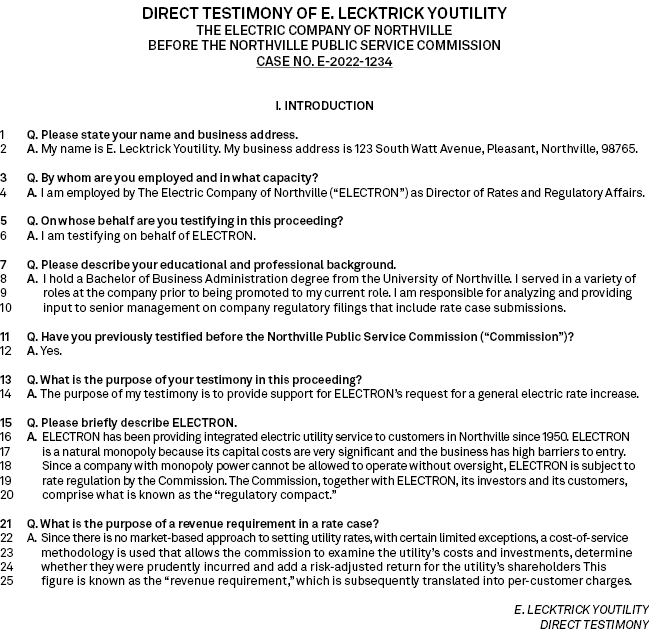Although utility rate case matters may seem arcane to individuals new to the sector and those without a deep understanding of the mechanics of the ratemaking process, industry experts say there is nothing to fear.
In a recent Topical Special Report, "The rate case process: a conduit to enlightenment," Regulatory Research Associates discusses the key aspects of a typical utility rate case, including the determination of an appropriate return on equity and the calculation of rate base.
Utilities are natural monopolies in part because their capital costs are enormous. Monopolies, by definition, also have high barriers to entry and cannot be allowed to operate without oversight, otherwise, the price of the company's product could be exorbitant. Hence, state utility commissions were created to regulate the rates charged by the utilities and, together with the utilities themselves, investors and customers, comprise what is known as the "regulatory compact."

The rate-setting process is grounded in the fact that utilities operate as monopolies where, in the absence of regulation, there is no market for competitive pricing of the utility's product. This applies to utilities in non-restructured jurisdictions, whereas in restructured jurisdictions, the power commodity itself can be considered competitively priced given the presence of competition for generation supply.
Since there is no market-based approach to setting utility rates, with the exception of the limited circumstances alluded to above, rate cases rely on a cost-of-service methodology, whereby the commission examines the utility's costs and investments, determines whether they were prudently incurred, and then adds a risk-adjusted return for the utility's shareholders. This figure, known in industry terminology as the "revenue requirement," then translates, in most instances, into a combination of a fixed monthly charge and an additional usage-based charge, which then form the basis for calculating each customer's total monthly bill.
When a utility decides to seek to raise its prices, the company must come before its state commission and file a rate case, unless it is already required to initiate rate proceedings at regular intervals. The reasons for a rate case filing are numerous, but they generally relate to investments by the utility, to changes in expenses and cost of capital, and to the impact of broader economic forces such as inflation or a sluggish economy.
The process begins with the utility's filing, which includes the testimony of several witnesses. The company quantifies the additional revenue it seeks to recover its operating costs, depreciation expense and taxes and to allow its shareholders to earn a reasonable return. Each witness supports a specific aspect of the filing, e.g., depreciation, rate of return or pension costs, akin to the sample testimony shown below.

The rate case process gives a diverse group of intervenors an opportunity to voice their concerns. These parties often sign onto settlements that facilitate resolutions to contentious proceedings.
A rate case is a quasi-judicial process, although there is no jury and the final outcome is determined by the commission. In some jurisdictions, the commission presides over the hearings and all aspects of a case, but in most instances the commissioners get involved at the end of the proceeding and make their decision after reviewing the entire case record. The process is complicated and costly, sometimes taking as long as two years to be completed.
Regulatory Research Associates is a group within S&P Global Commodity Insights.
This article was published by S&P Global Market Intelligence and not by S&P Global Ratings, which is a separately managed division of S&P Global.
Gain access to our full news & research coverage and the industry-specific data that informs our insights.
Request Demo



